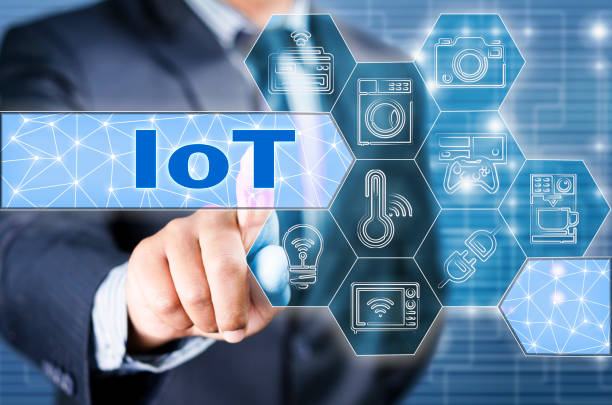
In the vast landscape of the Internet of Things (IoT), communication protocols act as the bridges that connect devices, enabling them to exchange data seamlessly.
However, selecting the right protocols for your IoT deployment can be a daunting task.
In this guide, we’ll embark on a journey to demystify the world of IoT communication protocols.
By understanding their types, advantages, and use cases, you’ll be equipped to make informed decisions that fuel your IoT success.
The Language of Devices

IoT devices communicate using various protocols, each tailored to specific requirements.
It’s essential to differentiate between protocols designed for different purposes, such as data exchange, device management, and security.
Understanding these categories will guide your protocol selection journey.
Befriending the Classics
Traditional protocols like MQTT (Message Queuing Telemetry Transport) and CoAP (Constrained Application Protocol) have stood the test of time in the IoT realm.
According to TechTarget, MQTT is ideal for low-bandwidth, high-latency networks and is commonly used in remote monitoring applications.
CoAP, on the other hand, is designed for resource-constrained devices and is popular in smart home applications.
Consider using MQTT for scenarios where reliable data exchange is crucial, like industrial monitoring.
CoAP shines in settings where energy efficiency and simplicity are paramount, such as home automation.
Embracing the Newcomers
As IoT evolves, new protocols like MQTT-SN (MQTT for Sensor Networks) and AMQP (Advanced Message Queuing Protocol) emerge to address specific challenges.
MQTT-SN is a variation of MQTT optimised for sensor networks, extending its reach to devices with limited processing power.
On the other hand, AMQP excels in scenarios requiring complex routing and messaging patterns, making it suitable for industrial systems that demand high-level communication orchestration.
These newcomers cater to specialised use cases, so assess your IoT requirements to determine if their features align with your goals.
Securing the Path
Security is a paramount concern in IoT deployments.
Protocols like HTTPS (Hypertext Transfer Protocol Secure) and CoAPs (CoAP Secure) provide encrypted communication, ensuring data confidentiality and integrity.
When selecting a secure communication protocol, prioritise end-to-end encryption and authentication mechanisms.
HTTPS is widely adopted in web-based applications, while CoAPs extends CoAP’s benefits to a secure environment.
Bandwidth Efficiency
Low-power IoT devices demand protocols that optimise bandwidth consumption.
According to IGI Global, LPWAN (Low-Power Wide-Area Network) protocols like LoRaWAN and NB-IoT (Narrowband IoT) are tailored for these scenarios.
LoRaWAN offers long-range communication with low power consumption, making it suitable for agriculture, logistics, and environmental monitoring.
NB-IoT, on the other hand, leverages existing cellular networks for IoT connectivity, catering to applications requiring extended coverage.
Scalability Matters
IoT’s growth potential necessitates protocols that can handle massive device counts.
AMQP, MQTT, and CoAP are scalable options, each with its advantages.
AMQP’s hierarchical routing facilitates scalability, making it suitable for systems with multiple layers of communication.
MQTT’s lightweight nature and pub/sub pattern excel in scenarios where thousands of devices need to transmit data to centralised systems.
CoAP’s simplicity and stateless nature support horizontal scaling in applications like smart cities.
A Glimpse into the Future
IoT’s rapid evolution paves the way for new protocols that adapt to emerging challenges.
WebSockets, for example, offer real-time communication by establishing persistent connections.
This can be crucial in applications where immediate data transmission is vital.
As you consider future-proofing your IoT deployment, stay updated on emerging protocols that align with your long-term vision.
By anticipating industry shifts, you position yourself to seamlessly integrate new solutions that enhance your IoT ecosystem.
Okay my lovely readers, now let us look into some frequently asked questions (FAQs) about How to choose the right IoT protocols for communication.
How do I choose the right IoT protocols for communication?
To choose the right IoT protocols, consider factors like data volume, range, power consumption, security, and device compatibility, ensuring optimal communication for your specific use case.
What are some common IoT communication protocols?
Common IoT protocols include MQTT, CoAP, HTTP, and LoRaWAN.
Each has its strengths, catering to different communication requirements in IoT applications.
How do I balance efficiency and security when selecting protocols?
Balancing efficiency and security involves evaluating the protocol’s encryption capabilities, authentication methods, and vulnerability to attacks, while also assessing its impact on data transmission speed.
Can I change protocols if my IoT needs evolve?
Yes, it’s possible to transition to different protocols as your IoT needs evolve.
However, it’s essential to plan for compatibility and ensure a smooth migration process for connected devices.
Conclusion
In the dynamic realm of IoT, communication protocols act as the lifelines that breathe life into connected devices.
The process of selecting the right protocols demands careful consideration of factors such as bandwidth, security, scalability, and use cases.
By embarking on this protocol selection journey, you’re taking a proactive step toward ensuring the success of your IoT deployment.
Remember, there’s no one-size-fits-all approach to protocol selection.
Analyse your specific IoT requirements, assess the strengths of different protocols, and align them with your project’s objectives.
In doing so, you’re not only choosing communication protocols; you’re crafting the foundation of a robust and efficient IoT network that will navigate the waves of technological evolution with confidence.








